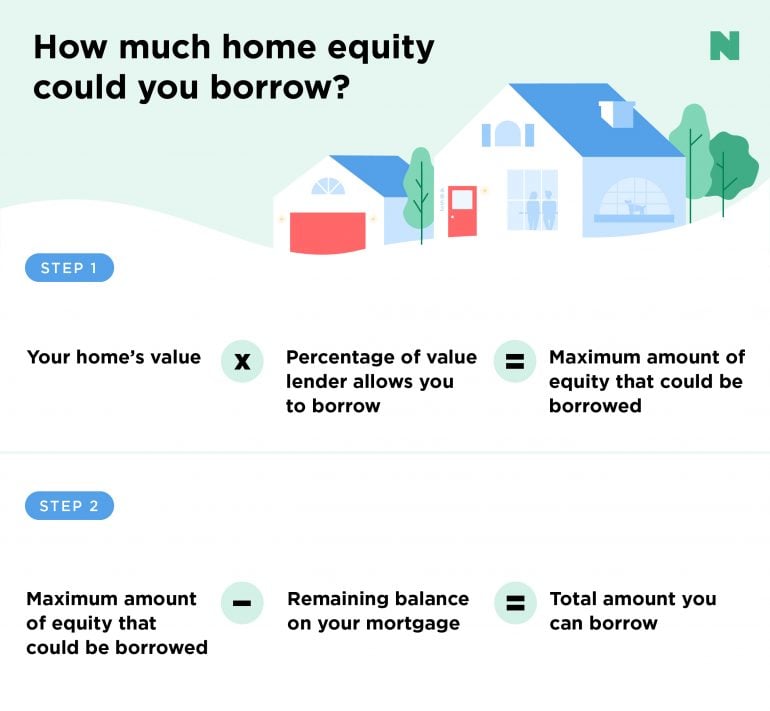A Comprehensive Guide to Picking the Right Equity Release Mortgages for Your Requirements
Selecting the ideal equity Release mortgage is a significant choice for numerous property owners. It includes understanding different items and examining individual economic demands. With choices like life time home mortgages and home reversion schemes, the course can appear complicated. Secret considerations consist of rates of interest and flexibility. As people browse this landscape, evaluating possible dangers and benefits becomes essential. What elements should one focus on to assure the most effective result?
Recognizing Equity Release Mortgages
Equity Release mortgages provide a monetary option for homeowners looking to access the value secured in their buildings. Primarily made for people aged 55 and over, these mortgages allow them to transform component of their home equity into cash while continuing to live in their homes. Home owners can use these funds for different functions, such as supplementing retired life revenue, moneying home improvements, or covering health care expenses. The core principle behind equity Release is that the funding is settled upon the home owner's fatality or when they relocate into long-lasting care, at which direct the property is typically offered to clear up the debt. This technique enables people to enjoy the benefits of their home's value without requiring to relocate. It is necessary for potential debtors to recognize the effects of equity Release, consisting of possible effects on inheritance and continuous financial dedications, prior to deciding.
Types of Equity Release Products
When discovering equity Release items, it is vital to recognize the main kinds offered. Lifetime home loans, home reversion schemes, and drawdown plans each deal one-of-a-kind attributes and advantages. Assessing these options can assist people in making educated economic decisions concerning their residential or commercial property.
Life Time Home Loans Explained
Lifetime home loans represent among the most common forms of equity Release items available to property owners in retirement. This kind of home mortgage allows individuals to borrow versus the value of their home while maintaining possession. Normally, the financing and passion accrued are paid back when the house owner passes away or relocates right into lasting treatment. Customers frequently have the option to choose between variable and set rates of interest, as well as whether to make regular monthly repayments or allow the interest roll up. The quantity readily available to borrow generally relies on the house owner's age and building value. This financial service can offer retired people with essential funds for various needs, consisting of home renovations or extra income, while enabling them to continue to be in their homes.
Home Reversion Schemes

Drawdown Program Overview
Drawdown plans represent a versatile alternative within the spectrum of equity Release products, allowing house owners to access their home's worth as required. These plans make it possible for individuals to Release a section of their home equity incrementally, instead than receiving a round figure upfront. This adaptability can be especially helpful for managing finances with time, as borrowers just pay rate of interest on the quantities they take out. Commonly, drawdown plans include a pre-approved restriction, guaranteeing that home owners can access funds when needed without reapplying. Additionally, this method can help reduce the effect of intensifying passion, as much less cash is borrowed initially. In general, drawdown strategies deal with those looking for economic adaptability while preserving control over their equity Release trip.
Key Variables to Take Into Consideration
When picking an equity Release home loan, several essential variables warrant cautious factor to consider. Rate of interest rates comparison, the loan-to-value ratio, and the adaptability of functions offered can greatly impact the viability of an item. Assessing these elements will assist people make educated choices that align with their monetary goals.
Rate Of Interest Contrast
Navigating the landscape of equity Release home mortgages requires careful consideration of rate of interest rates, which play a vital duty in identifying the general cost of the financing. Borrowers ought to compare variable and set prices, as taken care of prices use security while variable prices can rise and fall based on market problems. Furthermore, the timing of the rates of interest lock-in can substantially impact the complete settlement quantity. Potential debtors should also evaluate the interest rate (APR), that includes different costs and expenses connected with the home mortgage. Comprehending the implications of various rate of interest prices will allow individuals to make informed decisions customized to their monetary scenario. Inevitably, a complete evaluation of these variables can cause much more favorable equity Release end results.

Loan-to-Value Ratio
The loan-to-value (LTV) ratio acts as an essential metric in the domain of equity Release home mortgages, influencing both eligibility and loaning ability. It is determined by separating the amount of the finance by the appraised worth of the property. Usually, a higher LTV proportion indicates a greater threat for lenders, which can cause stricter borrowing standards. Most equity Release items have certain LTV limits, typically established by the age of the customer and the worth of the building. LTV ratios normally vary from 20% to 60%, depending on these elements. Recognizing the effects of the LTV proportion is important for borrowers, as it directly affects the quantity they can access while guaranteeing they continue to be within secure loaning limitations.
Flexibility and Functions
Comprehending the flexibility and features of equity Release home mortgages is necessary for debtors seeking to optimize their economic choices. Various items use varying levels of flexibility, such as the ability to make partial settlements or the option to take a round figure versus regular withdrawals. Consumers must additionally think about the portability of the home mortgage, which allows them to move it to a brand-new residential or commercial property if they make a decision to relocate. Added attributes like the capacity to include household members or the option for a no-negative-equity warranty can enhance safety and security and assurance. Ultimately, evaluating these aspects will help consumers select a strategy that straightens with their long-lasting economic goals and personal conditions.
The Application Refine
How does one navigate the application procedure for equity Release home loans? The journey begins with evaluating eligibility, which generally requires the applicant to be at the very least 55 years of ages and possess a considerable part of their home. Next, individuals ought to collect essential documents, including proof of revenue, identity, and building valuation.Once prepared, applicants can come close to a loan provider or broker specializing in equity Release. A financial advisor might also offer valuable support, making certain that all choices are thought about. Following this, the applicant Going Here submits a formal application, that includes an in-depth examination of their monetary circumstance and property details.The lending institution will then perform an evaluation, which might include a home evaluation and discussions concerning the candidate's scenarios and demands. The procedure culminates with a formal offer, allowing the applicant to evaluate the terms before making a decision. Clear interaction and understanding at each step are crucial for an effective application.

Costs and Costs Involved
Many costs and charges are related to equity Release home mortgages, and prospective debtors ought to recognize these economic factors to consider. There may be an application charge, which covers the lending institution's administration prices. In addition, appraisal costs are frequently called for to analyze the residential or commercial property's well worth, and these can differ considerably based upon the residential property's size and location.Legal fees should additionally be factored in, as debtors will require a solicitor to browse the legal elements of the equity Release procedure. Furthermore, some lenders may impose early payment fees if the mortgage is paid off within a particular term.It is necessary for consumers to thoroughly assess all prices connected with an equity Release home mortgage, as they can influence the general worth of the equity being launched. A clear understanding of these charges will enable individuals to make educated choices
Potential Threats and Benefits
Equity Release mortgages include a selection of costs and charges that can influence a customer's economic circumstance. They supply considerable benefits, such as access to funds without the need to sell the home, enabling consumers to utilize the money for retirement, home renovations, or to support relative. Nevertheless, possible risks exist, including the reduction of inheritance for successors, as the financing quantity plus interest should be paid back upon the borrower's death or move into long-term care. Additionally, the residential or commercial property's worth might dislike as anticipated, resulting in a larger debt than prepared for. Borrowers might also face restrictions on marketing the building or moving. If equity Release straightens with their lasting monetary objectives, it is crucial for individuals to thoroughly evaluate these risks versus the advantages to figure out. A complete understanding of both elements is vital for making an educated choice.
Questions to Ask Prior To Committing
When thinking about an equity Release mortgage, prospective consumers need to ask themselves a number of crucial concerns to ensure they are making an educated choice. They need to first assess their monetary circumstance, consisting of existing debts and future needs, to figure out if equity Release appropriates. It is essential to ask about the complete prices entailed, including fees, rates of interest, and any fines for very early settlement. Borrowers ought to also ask just how equity Release will affect inheritance, as it might lower the estate left for successors. Comprehending the regards to the agreement is necessary; for that reason, inquiries relating to the adaptability of the plan, such as the ability to make settlements or withdraw extra funds, should be dealt with. Prospective customers must take into consideration the track record of the lender and whether independent monetary suggestions has been sought to guarantee all aspects are thoroughly understood.
Regularly Asked Concerns
Can I Pick How Much Equity to Release?
People can normally pick just how much equity to Release from their home, yet the quantity may be affected by aspects such as age, home value, and lender demands - equity release mortgages. Consulting with a monetary advisor is suggested
What Occurs if Residential Or Commercial Property Worths Decrease?
If building worths lower, the equity available for Release reduces, potentially bring about a scenario where the impressive home loan exceeds the building value. This situation might restrict economic alternatives and effect future planning for homeowners.
Can I Still Move Home With Equity Release?
The capacity to move home with equity Release depends on the details terms of the equity Release strategy. Generally, several plans enable house owners to transfer their equity Release to a new property, based on approval.
Just How Does Equity Release Impact My Inheritance?
Equity Release can greatly affect inheritance. By accessing home equity, the general value of an estate may decrease, possibly lowering what recipients receive. It's essential for individuals to take right into account these ramifications when picking equity Release alternatives.
Are There Any Type Of Age Constraints for Candidates?
Age restrictions for equity Release candidates normally require individuals to be at the very least 55 years old (equity release mortgages). Lenders might have additional Read Full Report criteria, typically thinking about the applicant's economic circumstance and the residential property's worth during the analysis procedure
Verdict
In summary, picking the ideal equity Release home mortgage needs careful evaluation of private financial scenarios and objectives. By comprehending the various item kinds, vital aspects, and linked costs, debtors can make educated choices. Furthermore, identifying possible dangers and advantages is necessary for lasting financial security. Seeking independent financial guidance can better improve the decision-making process, guaranteeing that the selected equity Release service straightens with the homeowner's total financial strategy and future goals. Equity Release home loans provide a monetary remedy for homeowners looking to access the worth locked in their residential properties. Recognizing the adaptability and features of equity Release home mortgages is important for borrowers seeking to maximize their monetary choices. Some loan providers might enforce early settlement costs if the home mortgage is paid off within a certain term.It is crucial for customers to extensively review all expenses connected with an equity Release home mortgage, as they can influence the general value of the equity being launched. The ability to move home with equity Release try this website depends on the details terms of the equity Release plan. Looking for independent monetary advice can even more enhance the decision-making procedure, making sure that the picked equity Release service lines up with the homeowner's total economic strategy and future desires.